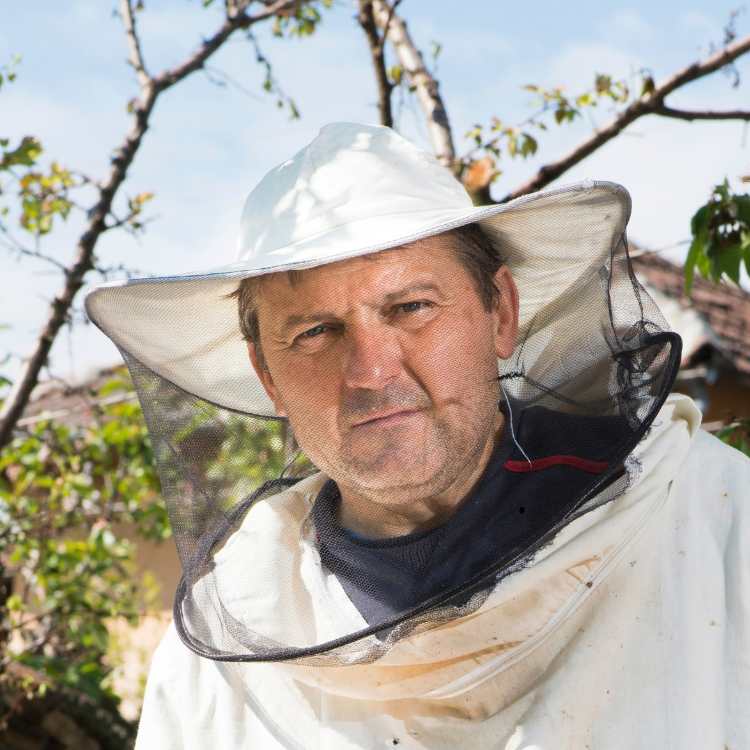Thinking of bees, the first image that comes to mind is bright yellow bugs moving from flower to flower and living in a colony to produce honey. But not all bees live and work the same. There is a lesser known group of bees that deserves just as much attention as their honey-making counterparts-—digger bees. These amazing pollinators play a very crucial role in our ecosystem, yet most of the time they go unnoticed because they tend to spend most of their lives underground.
Let’s “dig” up the secrets of these bees and why we should care about them, too.
What are digger bees?
Also called ground bees, digger bees are solitary bees that nest underground. Unlike honeybees that live in colonies with a structured social system, each female digger bee works independently to build and maintain her own nest. In the US alone, there are over 70 identified species of digger bees which are mostly found in the western states. Globally, over 400 species exist.
Digger bees generally emerge from the ground in early spring in places where the ground is dry and sparse. You might also get the chance of noticing them buzzing low to the ground or small holes in your yard where they have made their nests.
It is important to note that while these bees do not form huge hives, they often build their nests in close proximity to each other to create an impression of a larger bee neighborhood.
The lifecycle of a digger bee
The life cycle of a digger bee revolves around reproduction and pollination. The female digger bees build their nests underground by digging narrow tunnels into the soil which are usually six inches deep. At the bottom of each tunnel, small chambers are built to store a nutritious mix of pollen and nectar to feed the young. This is what is known as bee bread.
Mile digger bees have a completely different role. They are not responsible for building the nests or gathering food. Instead, their primary purpose is to emerge from the soil before the females and wait for their chance to mate. It is quite common to see them hovering around the nest sites, searching for a partner.
After the females lay their eggs in the underground chambers, the new generation of digger bees stays underground, feeding on the bee bread until they mature and emerge as adults the following year, thus continuing the cycle.

Identifying digger bees
Digger bees vary in size. Ranging from ¼ to ½ inch long, their appearance depends on the species. Usually in the dark or metallic shades of white, yellow or rust colored markings. Females are particularly fuzzy which helps them to collect and carry pollen more effectively.
Unlike more aggressive bees or wasps, these digger bees are quite gentle and rarely ever sting humans. They are not territorial so they won’t swarm or attack if you walk near their nests. They will only sting if they are directly handled or threatened, making them far less menacing than yellowjackets or hornets.
Where do digger bees nest?
Digger bees prefer dry, well drained soil with little vegetation. If your lawn has bare patches or areas with thin grass, there is a chance that you might find them nesting there. Digger bees do not harm the turfgrass but their small soil mounds can be an aesthetic concern for some homeowners.
It is important to note that the digger bees do not create these bare spots on the ground. The thin grass and dry conditions attract them in the first place.
Nests often appear in clusters though each bee digs and maintains its own separate tunnel. These groupings can look very much like miniature excavation site but they are harmless and only temporary.

Digger bee nest
The benefits of digger bees
These bugs are incredibly beneficial pollinators. Since they emerge early in the season, they help pollinate many native plants and early blooming crops that other bees might not be active for yet. This highly efficient foraging habit makes them crucial for plant reproduction, especially for certain varieties of wildflowers and fruit trees. Plus, digger bees are also great at controlling pests. Some digger bee species prey on harmful insects. Because these are non-aggressive, you can enjoy their presence without worry.
The bigger picture
Like most native bee species, digger bees are also facing threats from habitat loss, pesticide use and climate change. As these important pollinators continue to disappear, their contribution to plant diversity and food production will become irreplaceable. Protecting their habitats and allowing them to thrive in natural spaces benefits not just these bees but also the broader ecosystem.
The next time you see small holes in the ground or a fuzzy bee buzzing close to the soil, take a moment to appreciate these hardworking insects. And while they might not produce honey like their more famous relatives, they play an essential role in keeping our environment healthy and thriving. We need to support biodiversity by coexisting with digger bees to ensure these essential underground pollinators continue their important work for generations to come.
Digger bees are just one of the 20,000 plus bee species around the globe. Want to learn more about their fascinating world? Follow our complete blog for valuable insights and fun trivia into the wonderful world of bees.





